Alan Kohler has penned an article in The New Daily blaming excessive immigration over several decades for driving Australia’s housing crisis:
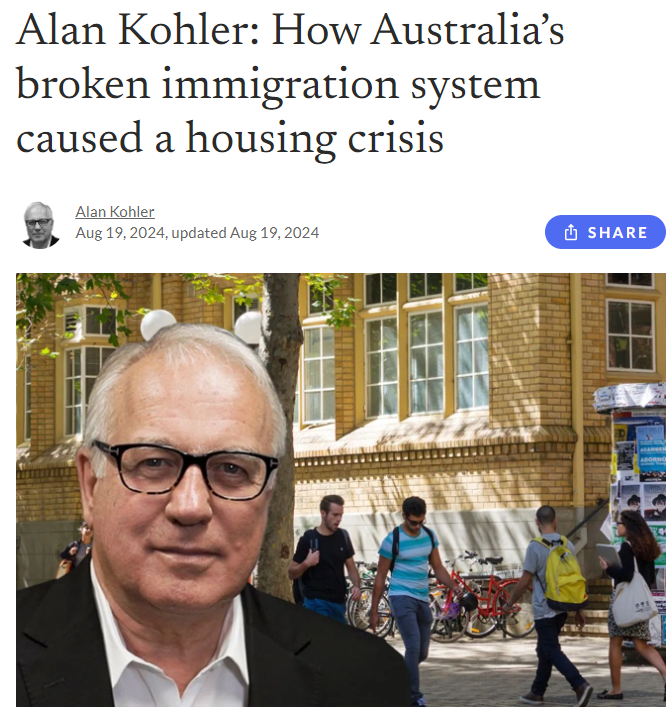
While I disagree with several aspects of the article, Kohler’s overall conclusion is correct:
“Getting Australia’s population growth down to something approaching the actual capacity of the construction industry to build houses for them all – as opposed to what the government might wish it was – is not going to be easy”.
This echoes my consistent argument that Australia’s immigration intake must lowered to a level that is commensurate with the nation’s ability to build homes and infrastructure. Otherwise the housing situation and overall liveability will continue to worsen.
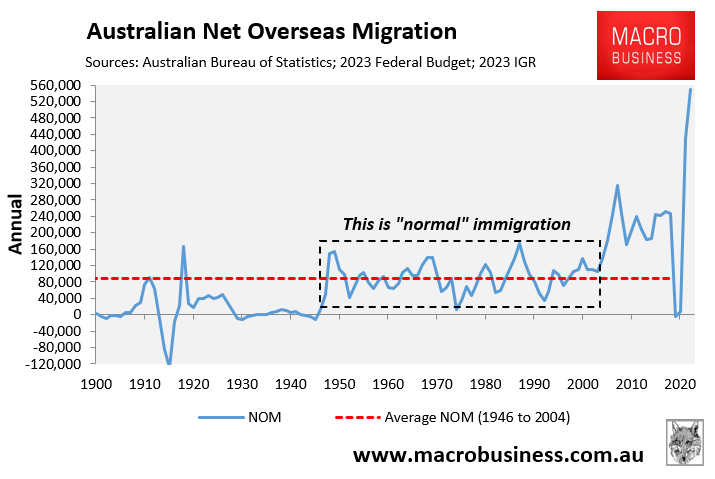
Despite this obvious conclusion, only 6% of responses from 49 so-called “leading” economists have listed “restrain immigration” as a solution to Australia’s housing affordability crisis, whereas “ease planning restrictions” was cited as the number one solution:
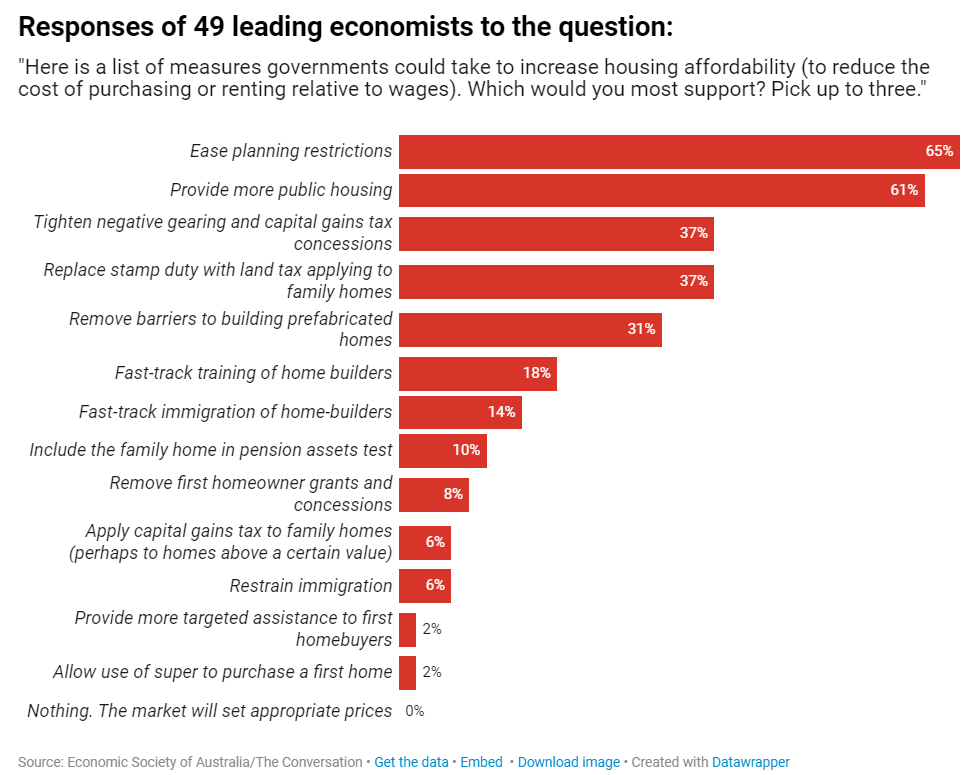
Even worse, 14% of respondents supported importing more migrants to build homes for migrants.
The failure to acknowledge excessive immigration as a significant barrier to affordability may partly reflect the fact that the economists surveyed are mostly tied to the people smuggling higher education sector and therefore have a vested interest in high immigration via the international student rort.
Nevertheless, they need to face the basic facts of the housing situation.
The 2023 Intergenerational Report projected that Australia’s population would reach 40.5 million by 2062-63:
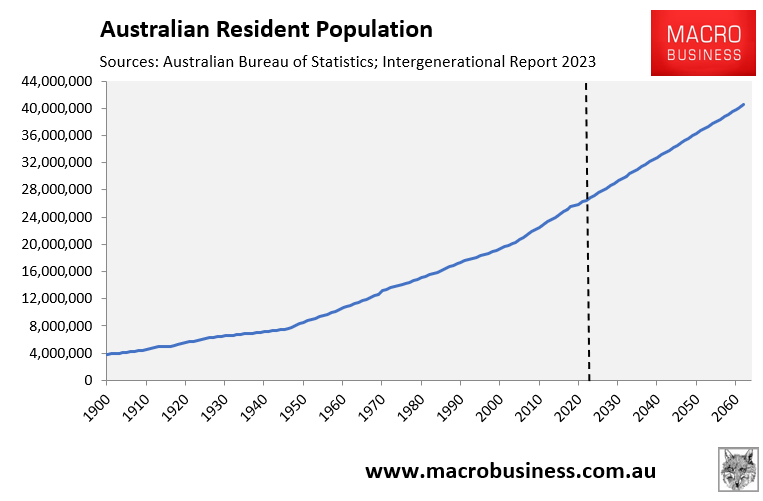
This 13.5 million projected population increase in only 39 years—equivalent to adding another Sydney, Melbourne, and Brisbane to Australia’s current population—would conservatively require the construction of around 6 million homes, accounting for demolitions.
I say conservative because most of these homes would be apartments, which by nature cannot hold as many people per dwelling as detached houses.
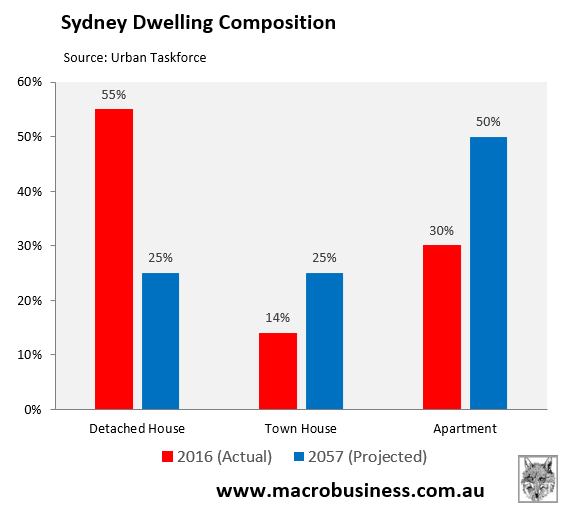
This level of population increase would also require enormous volumes of infrastructure investment, which would compete against housing for labour and resources.
Therefore, for Australia’s economists to ignore “restrain immigration” as a key solution to the nation’s housing crisis is ridiculous and reflects ideology and vested interests rather than a rational analysis of the situation.
Hilariously, the cheerleader of the supply-only economist shills, Peter Tulip, claimed the results prove that “economists think that immigration boosts living standards”:
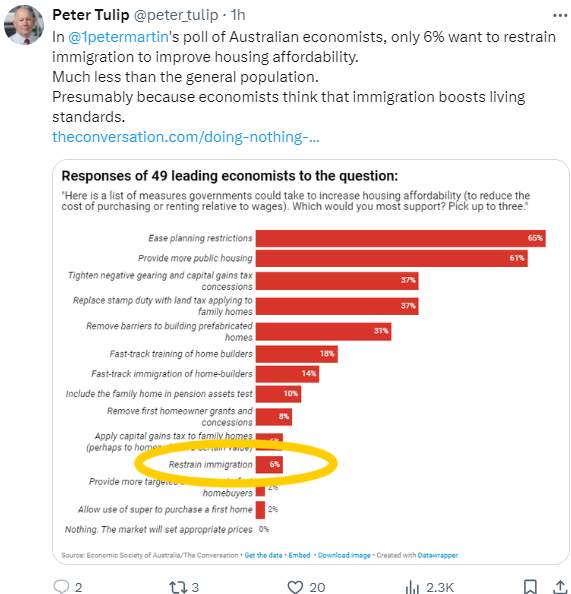
If true, it merely shows how captured Australia’s economics profession has become to the growth lobby.
Who in their right mind thinks that a Melbourne of 9 million people will be more liveable than the Melbourne of 3.5 million at the turn of the century?
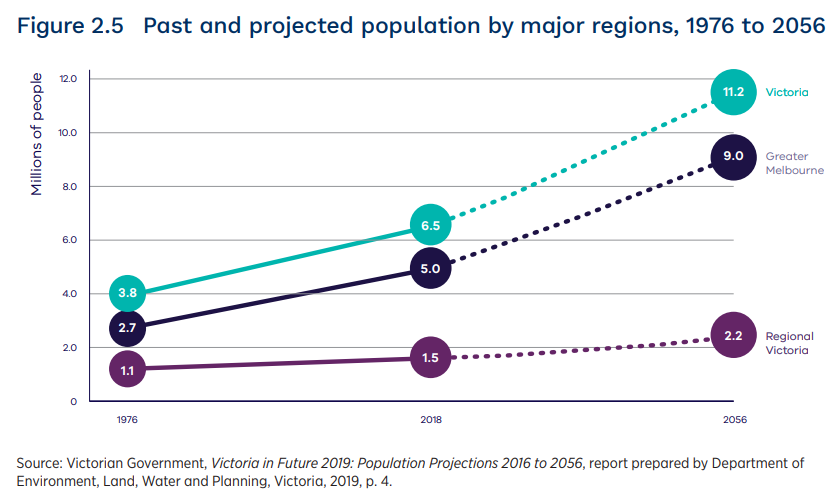
And who genuinely believes that a future of expensive high-rise living is preferable to the low-rise detached house living of the past?
Independent economist Tarric Brooker also noted on Twitter (X) that “Australia completes more homes per capita than almost anywhere in the developed world. When the population is constantly grown at such a large rate, even a world beating level of construction still can’t keep up”:
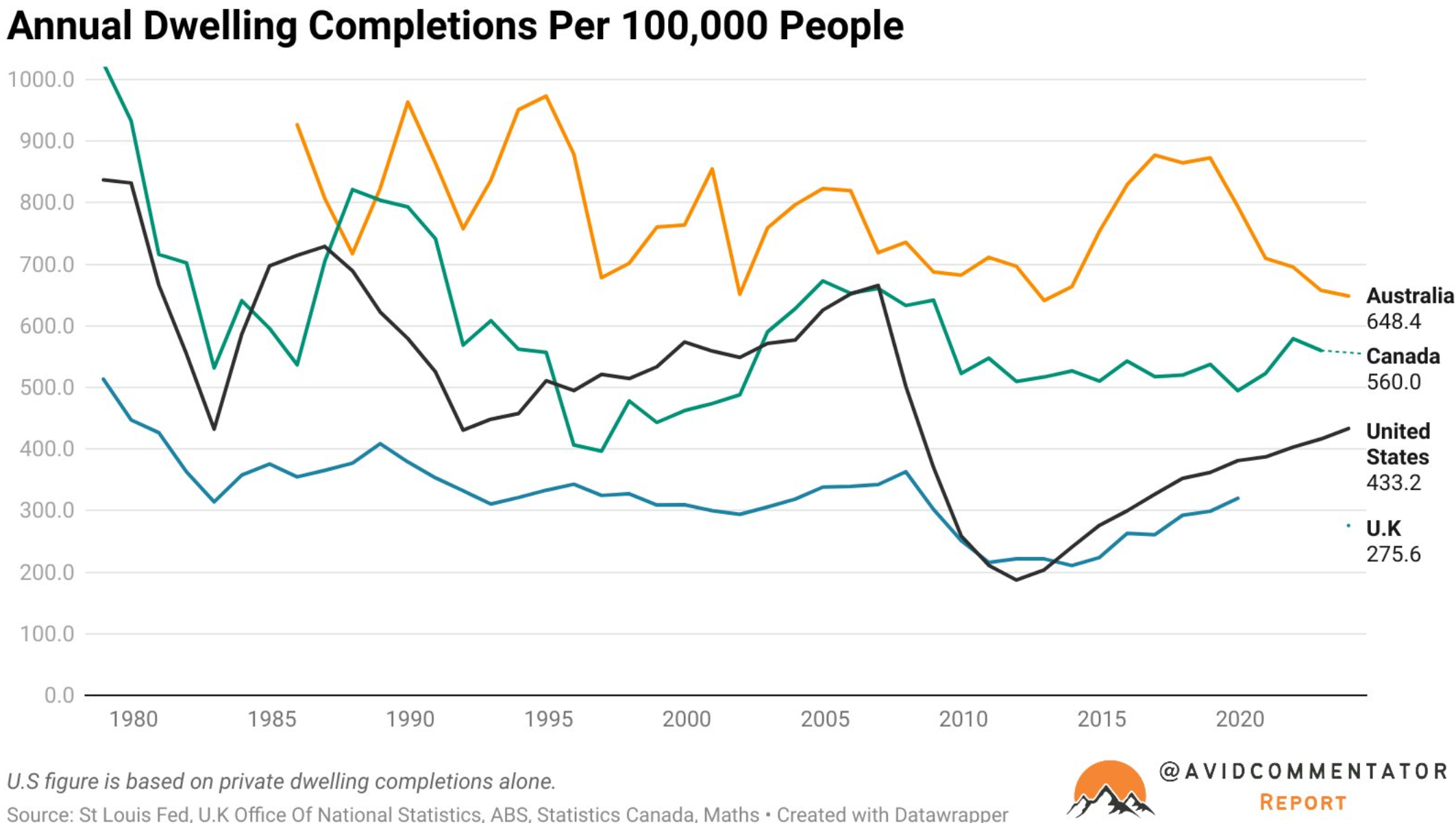
I will add that Australia also has more construction workers per capita than most other developed nations:
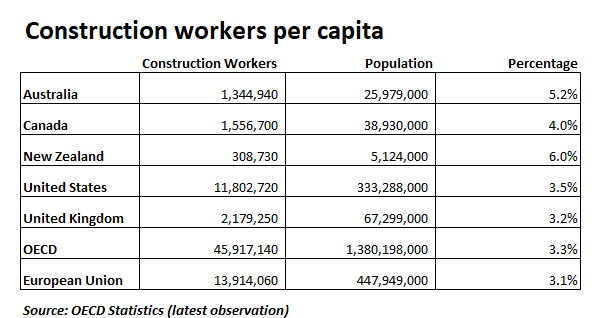
Therefore, the notion that Australia’s housing crisis is mostly about supply is absurd and does not align with the evidence.

